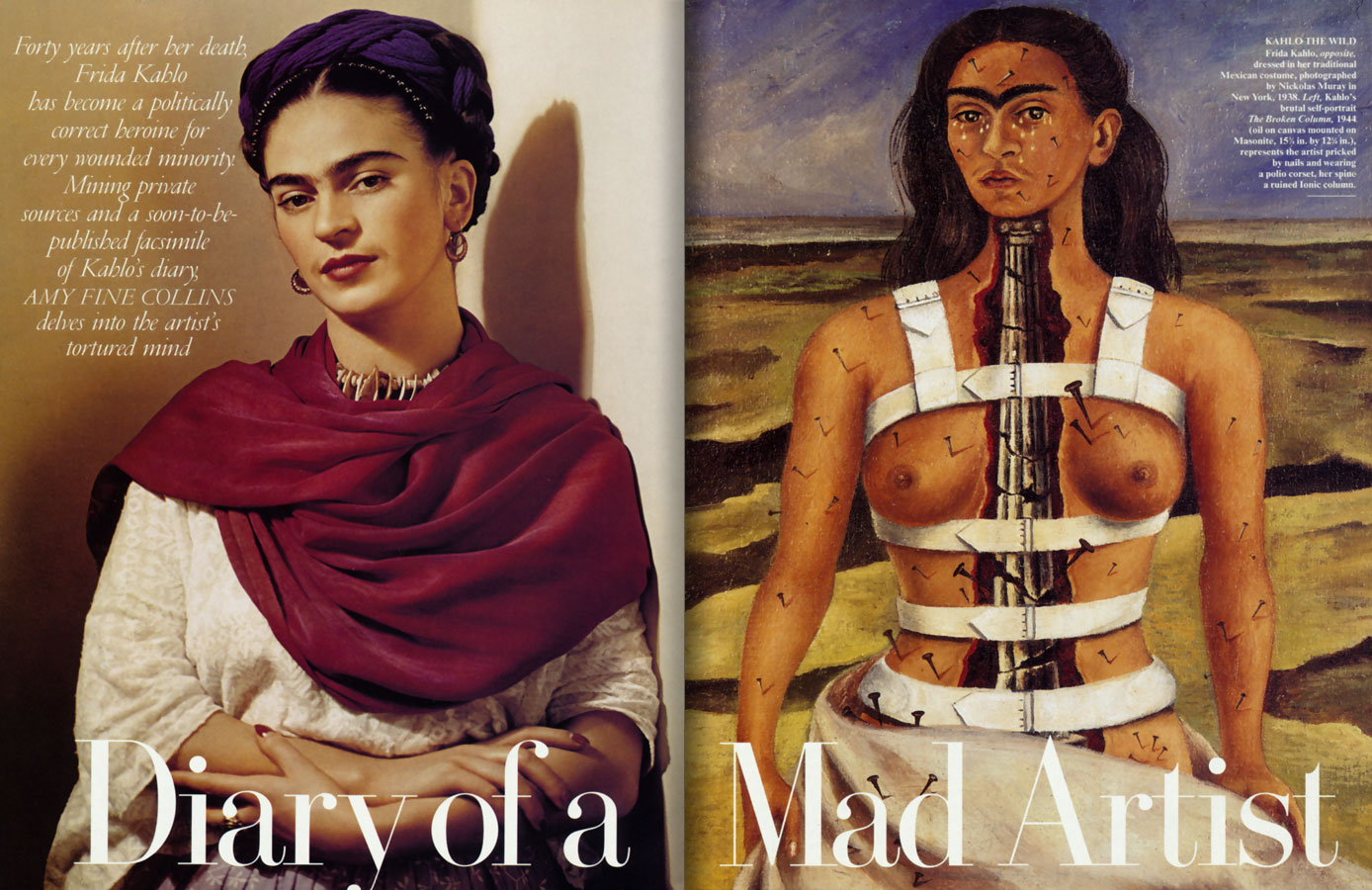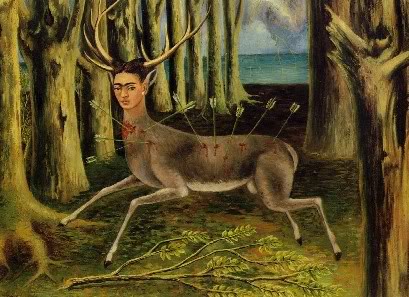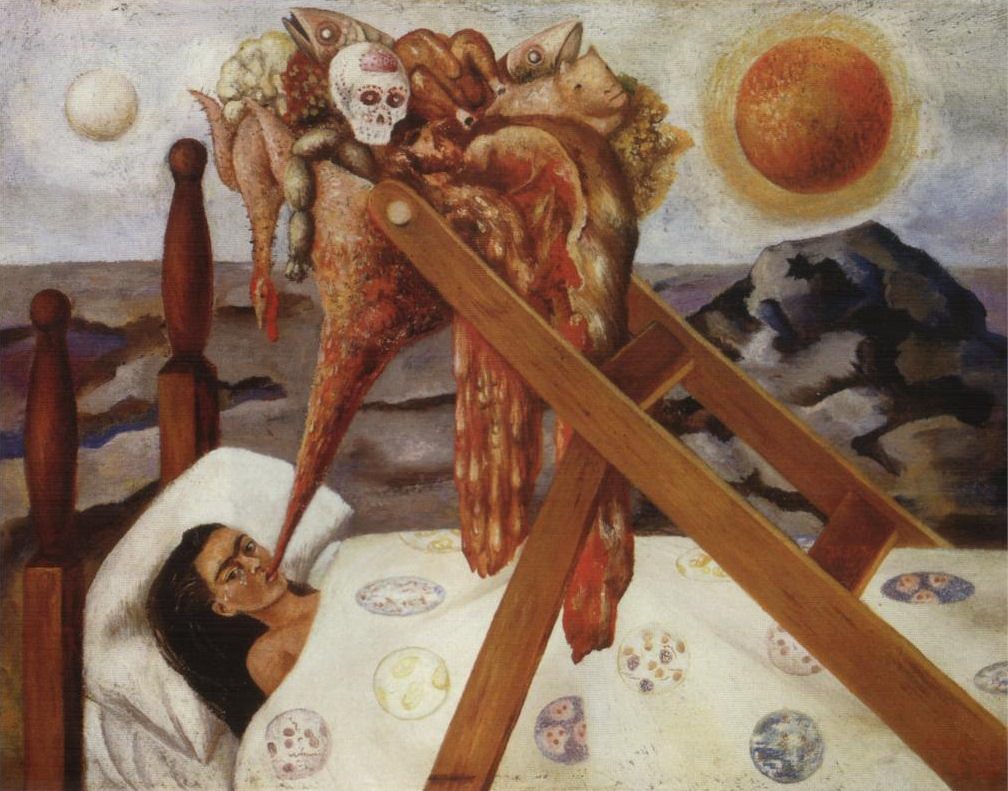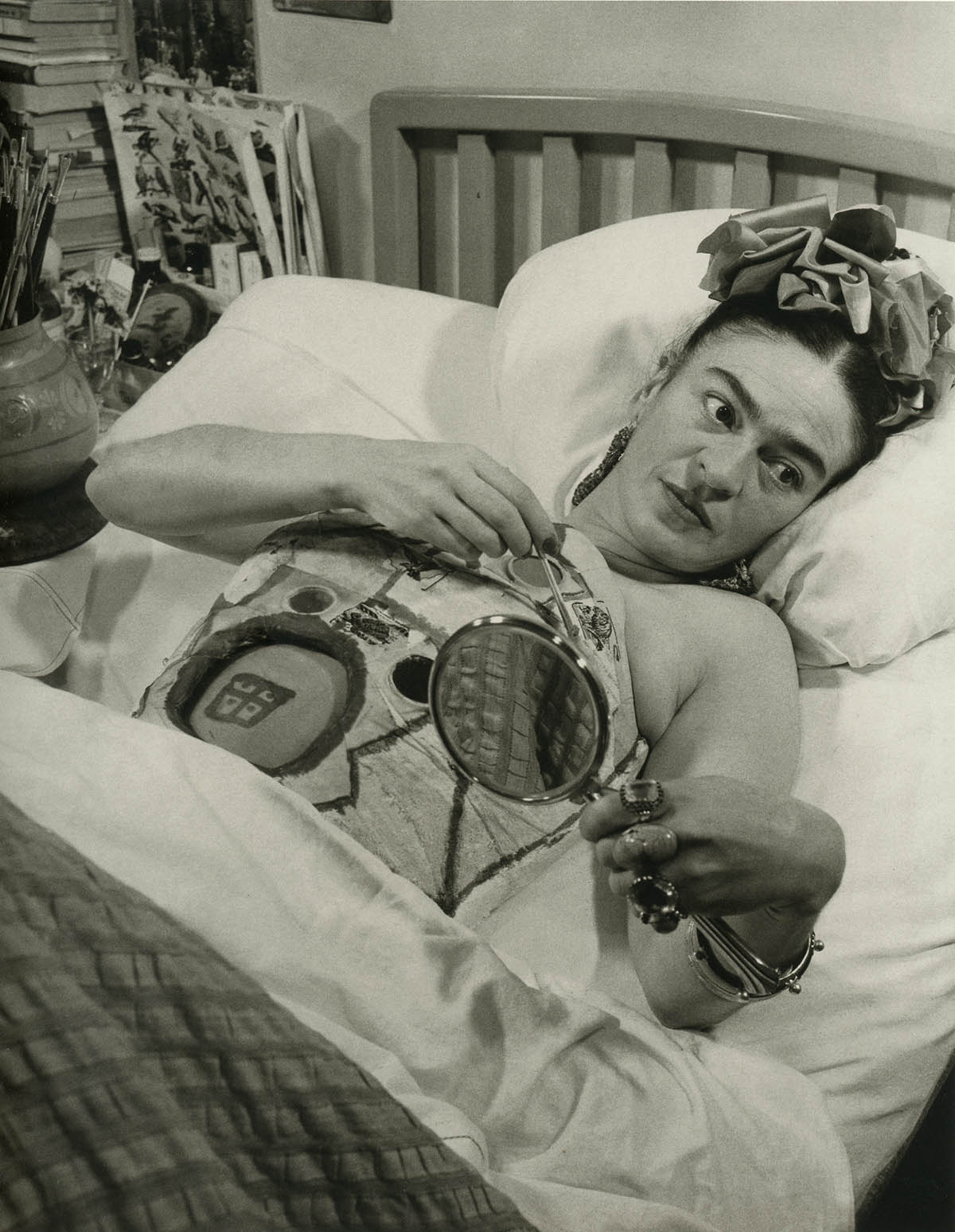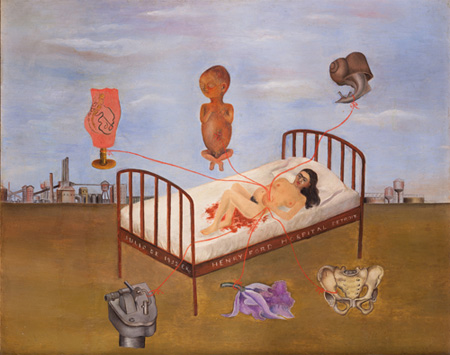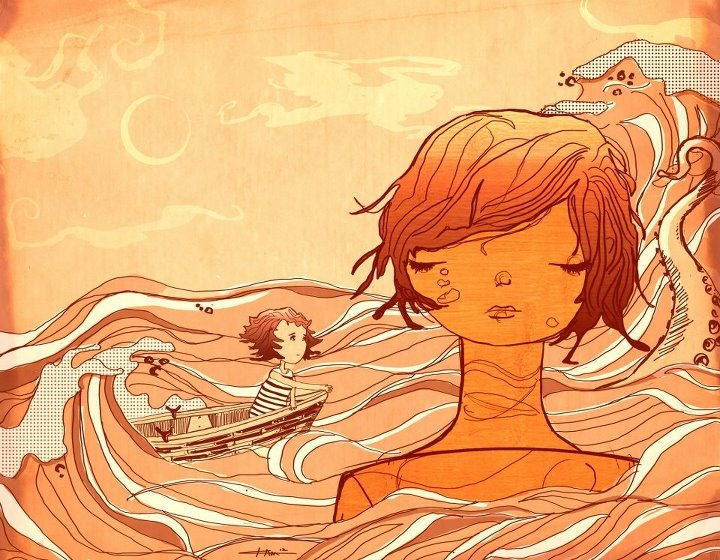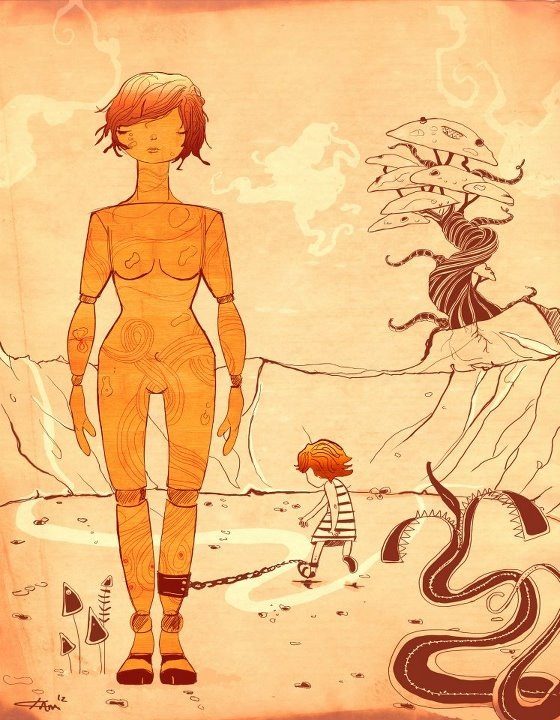It's 4am and I can't sleep. Insomnia disappeared for awhile but the last few months it's been climbing back.
I'm extremely uncomfortable at night. My upper limbs feel heavy. My shoulders feel like they just hang — like heavy weights without life. It feels like my arms, hands and fingers have been getting weaker. My joint pain has increased. This is not an HIBM symptom. Some patient's experience it, some don't. I do. Alot. I'm in constant pain in that area. I try not to think about it but it's hard when your body is in constant reminder mode.
I guess we take for granted the seamless effort our body goes through. A "normal" body is constantly working in unified collaboration for one single move. To them it's effortless.
So I'm making use of the middle of the night, or rather morning, by doodling out future sketches while watching Ratatouille.
My little Pippi is laying at my feet, looking up at me and wondering when I'm going to sleep so she can sleep.
"I paint my own reality. The only thing I know is that I paint because I need to, and I paint whatever passes through my head without any other consideration."
-Frida Kahlo
Today is Frida Kahlo's birthday. Kahlo was an early 20th century Mexican “Surrealist” painter. She was a child among the Mexican Revolution and best known for her autobiographical self-portraits.
After her trolley accident Kahlo neglected her dream of becoming a doctor and turned to painting during her immobilization periods. A steel pole went through her hip and she was left with multiple broken bones, including her pelvis, ribs, spinal column, collarbone, multiple fractures in her leg, a crushed, dislocated foot and a dislocated shoulder. During the accident an iron handrail pierced her abdomen and uterus leaving her unable to have children; a conspicuous subject matter that commonly shows up in her work.
Her parents had a special easel built so she could paint from bed. I've often wondered what my art station set-up would like if this happens to me in the future. Although, her situation didn’t cause weakness in her arms and hands like mine does.
I try not to think about it (future) but from time to time it needles its way in.
Kahlo’s trolley accident when she was 18 was not her first brush with immobility. At age 6 she contracted polio. She was bedridden for nearly nine months and eventually recovered with only a limp to remind her of her childhood struggle. To aid her recovery her father encouraged her to swim, play soccer and even wrestle — highly unusual for a girl at the time.
Kahlo painted from real experiences and much of her work are suggestions of the chronic pain since her accident. In her paintings she depicted her physical ailments, miscarriages, and identity struggles.
Despite her pain-filled paintings she was feisty, direct and tenacious with a zest for life. She was active and loud in the political, intellectual, literary and artistic movement. But by 1950 her health issues were all-consuming.
Kahlo was not your typical woman, especially for her time. She is often regarded by feminists as an inspiration and fellow feminist, which is interesting since Frida didn't regard herself as one. I think Frida would hate that feminists use her and claim her as their own since she was adamant in belonging to no label. She was beyond labels or trend.
Kahlo also rejected being labeled a surrealist painter.
“They thought I was a Surrealist, but I wasn’t. I never painted dreams. I painted my own reality.”
Even though Kahlo was an artist, political activist and intellectual she loathed and had no room for elitism and high society. She remained true to her roots and skeptical of those who reveled in artistic and intellectual elitism for the sake of being better than others.
“I would rather sit on the floor in the market of Toluca and sell tortillas, than have anything to do with those ‘artistic’ bitches of Paris.”
To categorize Kahlo into a group almost devalues who she was. She merely painted what she knew and experienced. And what she knew was herself. She valued her life and took her work seriously even when museums didn't. She put herself on canvas.
It’s strange because I've held this same philosophy throughout my life. As I’m writing this I realize I hold many similarities. I don’t like to be categorized. While I’m an adoptee, former orphan, artist, disabled, Korean, American etc., I’m often weary of any such label since I’m many things and a sum of many experiences. To me I'm just Kam.
Kahlo's self-confidence, in spite of her ailments, led her to do and be who she wanted. She was independent and chose not to fall into the trappings of tradition. She regarded herself a sexually liberated woman and openly bi-sexual who occasionally dressed in men's clothing. Despite her physical frailty, Kahlo had many love affairs and was no friend to monogamy.
In 1953 Kahlo received her first solo exhibition in Mexico. Prior she had exhibited in United States and Europe. At the time she was bedridden but that didn’t stop her from missing her own opening night. Arriving by ambulance, Kahlo interacted with her art show attendees from her four-poster bed set up in the middle of the gallery.
A few months later her right leg was amputated to stop the spread of gangrene. She returned to the hospital several times afterwards but stayed politically and artistically active up until her death at age 47 in the “Blue House” she was born in. Officially it was reported her death was due to pulmonary embolism but many suspected suicide, including her nurse who counted her painkillers. Kahlo had been suicidal throughout her life.
In her last diary post she wrote, "I hope the exit is joyful — and I hope never to return"
One would think that a statement like that derives from a person who didn't truly enjoy life but I think she was just being honest. I hate when society romanticizes artists as "mad", "tragic" and "tortured" because aren't we all? The only difference is artists have the ability to leave a visual trail. I myself hate being described as a sad tragic artist. It's insulting. Her pain was real and though she did so much with her life, I think she understood and accepted her own mortality and place in life.
We are important, but not at the same time. I think once we are able to accept that and the reality of mortality, we can start to grow and not take ourselves so seriously. We can live beyond the confines of tradition and rules set for us.
We often think people who express sadness or real moments of pain must always be that way but you can simultaneously represent both sadness and employ a relentless pursuit of life. I can express how my condition feels and still live my life to the fullest with joy and passion.
What is real is real. What is pain is pain. Multiple emotions can exist at the same time.
I don't post art so people can feel bad or feel sorry for me. I do it because I know alot of people are going through the same thing, even if it is in a different form. In the end we are all seeking connection and understanding.
Frida was recently exhibited at LACMA and I of course wanted to see her work in person.
Like most artists, she was not famed until years after her death.
I had always been a big fan of Frida Khalo long before my condition even started. I liked that she represented herself as almost ugly and painted her own past, present and future.
In high school I would sit in the library and read about her during lunch and appreciated the honesty depicted through her images.
Now, that I have a progressive condition, I still like her but look at her work much differently. When I started illustrating about my condition a couple years ago, I hadn't even thought of Kahlo. But she's recently been on my mind.
Kahlo had many fans visiting her work at the LACMA exhibit. I had to traverse through the crowd of spectators who repeatedly ran into me right after artfully theorizing and dissecting her paintings on the wall.
"Oh, I didn't see you," they would say annoyingly as they ignorantly regarded me as someone in their way. It was ironic since they were just intellectually salivating over a disabled artist's collection. I think many people like art for the appearances of liking art but completely miss the message. This both applies to spectators and fine artists.
I sat there quietly rolling through the artist's emotions and it felt weird to add "meaning" to it. It felt weird to look upon another's emotions and pain; feelings that you are well aware of because of your own intimate experience. Her work was social and political as well her own personal agony.
"Disability" is a person and not just a condition or disease. Understand the person behind it and only then can you understand the disability.
"I paint self-portraits because I am so often alone, because I am the person I know best." -Frida
Here are a couple new illustrations below. I suppose art is the healthiest way I can distract myself. I'm very lucky to be able to use drawing as a tool to express myself and the experience. I seem to use it to make sense of things to myself first because I understand things better visually. And second, to make sure I am clearly communicating it to others.
Sometimes I think the art circle is meant to be above someone, a means to hide cryptic deep messages into an image that only an intellectual, an artist or the educated can get. But I think art should be the opposite. It's not meant to be above but with. Art is meant to communicate and make the viewer feel like they are a part of something.
What good does it do if no one can understand what you are trying to say?
When something challenges you like going through cancer, a death, a horrible disease — if you can handle it with dignity, humor, expression and growth, no matter what the outcome at least you proceeded gracefully and learned.
I guess drawing is how I can make sense of it all. Thanks for following my work. I wish I could complete five new drawings a day. I have so many I need to finish. Time to sleep.




